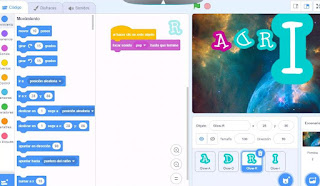Unit 3. Digital content, information evaluation and licensing.
- Obtener enlace
- X
- Correo electrónico
- Otras aplicaciones
19. 02. 21
🕃 THEORICAL PART:
💥In today's lesson I was able to learn about recognizing what a digital content is. It is any form of data or information in digital form (electronic files), as opposed to physical form (analog). Therefore, we have many examples as documents, presentations, images and videos, etc.
👉After that, we saw that there are two types of software: system software which has operating system, file management utilities, disk operating systems, etc. (example: android) and application software (example: word).
Continuing with the software topic, we understood the meanings of software licenses as we can generally classify them in 4 types from the point of view of the license:
- Copyrigt (Traditional licence) : you pay for the privilege of using software.
- Free software: you have the freedom to modify the source code of this software and you can redistribute it.
- Freeware: this software is distributed free, but have copyright and you can’t change the source code.
- Shareware: initially distributed free of charge, but may later require a payment to unlock (trial) or keep functionality.
Ⓜ Moreover, we realized that Content curation is the process of filtering, grouping and selecting the most useful information for the user. Where there are four steps: Search, Filter, Analyze/Create (add your valie) and Share. Some specific platform of this topic are reddit or wakelet.
Moving forward there are some legal aspects that we need to know: intellectual property and copyrights.
- Intellectual property refers to creations of the mind: inventions; literary and artistic works; and symbols, names and images used in commerce and is the set of rights that authors have over their original creations.
- Copyright refers to the legal system of author rights regulation that we have related to our intellectual property. It’s created automatically and you don’t need to register. This has allowed authors to protect their work, although in recent years, due to the development of the Internet and the exchange of information, attempts have been made to eliminate or reduce existing limitations for reusing or modifying content. Then, thanks to Creative Commons which is a non-profit organization dedicated to providing free permission to the public to share and use their creative work under the terms and conditions of their choice.
There are several types of Creative Commons license with different configurations to provide a work with permissions for citation, reproduction, modification or distribution.
५ They can be grouped into four modules of conditions:
- Attribution (BY): allows copying, reproduction, distribution, modification and comercial use of the work as long as the original author is recognized.
- Share equal (SA): allows modifications on the work but under the same or similar license.
- Non-commercial (NC): requires that the work is not used for commercial purposes
- Non-derivative (ND): does not allow modification of the work in any way (includes SA)
б The combination of these modules gives rise to six Creative Commons licenses:
- Reconognition (CC BY).
- Reconognition – Without Derivative Work (CC BY-ND).
- Reconognition - No comertial (CC BY-NC).
- Reconognition – Share Equally (CC BY-SA).
- Reconognition - No comertial – Share Equally (CC BY-NC-SA).
- Reconognition - Without Derivative Work - No comertial (CC BY-ND-NC).
🕃 PRACTICAL PART:
ACTIVITY 1.
Link to a post:
https://www.edu.xunta.gal/espazoAbalar/sites/espazoAbalar/files/datos/1541426032/contido/press/different_types_of_newspapers.html
This website is available via licence CC BY-SA, meaning that this website cannot be used unless it is recognized (BY). And we can modify the post (share equally) if we have the same license (SA).
https://www.publicdomainpictures.net/es/view-image.php?image=137969&picture=periodico-del-vintage-posters
This Creative Commons license is for the public domain, that is, so that the image can be redistributed and manipulated completely freely and without restrictions. In this case, the author of this work has renounced his copyright to it, becoming part of the public domain.

Este obra cuyo autor es Adrián González está bajo una licencia de Reconocimiento-NoComercial-CompartirIgual 4.0 Internacional de Creative Commons.


Este obra cuyo autor es Adrián González está bajo una licencia de Reconocimiento-NoComercial-CompartirIgual 4.0 Internacional de Creative Commons.
- Obtener enlace
- X
- Correo electrónico
- Otras aplicaciones




Comentarios
Publicar un comentario